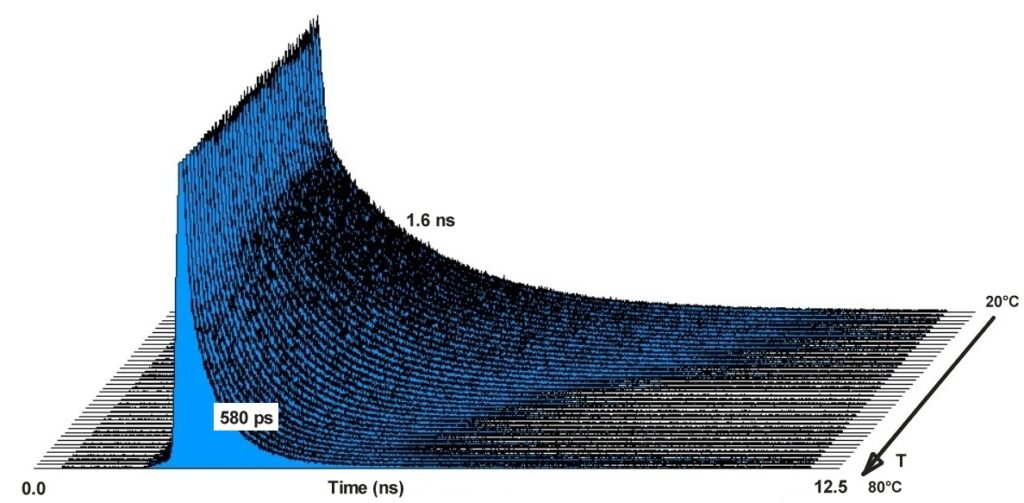Micro-volume measurement of temperature is possible via the temperature-dependence of the fluorescence quantum efficiency of organic dyes. Measurement based on the fluorescence intensity is, however, problematic: The result depends on the dye concentration and the excitation intensity. It also depends on the optical system and on possible absorbers which can be present in the measurement target. These complications are avoided if the fluorescence lifetime is used to measure the temperature [1]. The fluorescence lifetime does not depend on instrumental parameters and can be quantitatively measured by TCSPC. An example for Rhodamine B as a temperature sensor is shown in the figure below. The data were recorded by an SPC-150N TCSPC module and a BDS-SM picosecond diode laser. As the temperature increases from 20°C to 80°C the fluorescence lifetime decreases from 1.6 ns to 580 ps.

For accurate lifetime-based temperature measurements a few non-ideal features should be taken into regard. First, the fluorescence decay of Rhodamine B does not remain single-exponential over the entire temperature range. However, in a multi-exponential decay the a single-exponential fit is not accurately related to the quantum efficiency. To obtain results compatible with intensity-based measurements double-exponential decay analysis should be run on the data, and the amplitude-weighted lifetime be used as a measure of temperature.
Moreover, when the technique is used in biological environment there may by other molecular environment parameters influencing the fluorescent lifetime. This may require a re-calibration of the lifetime-temperature dependence [1]. Another pitfall can be unexpected fluorescence from biological compounds which absorb at the laser wavelength. Such compounds are often considered ‘non-fluorescent’ because they have extremely low fluorescence quantum efficiency. However, low quantum efficiency does not mean that there is no fluorescence. It only means that the lifetime is very short. It can thus interfere with the temperature measurement. If an ultra-fast decay component is present (in fact, in the data shown above it is) it should be excluded from the lifetime calculation. This can be done either by excluding the first part of the decay function from the fit or by running a triple-exponential fit and excluding the fast decay component from the calculation of the amplitude-weighted lifetime.
[1] R. Mercadé-Prieto et al., Photochem. Photobiol. Sci. 2017, 16, 1727-1734.
